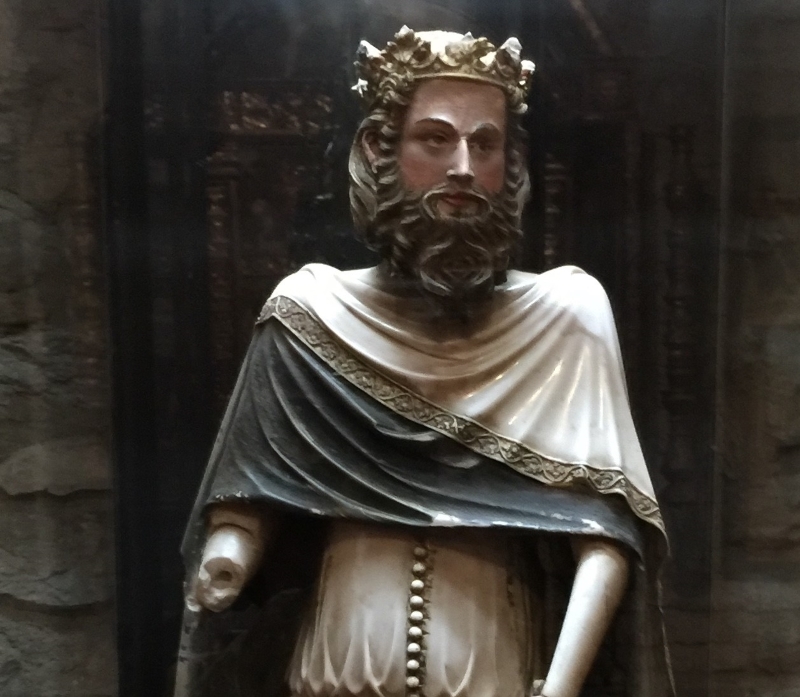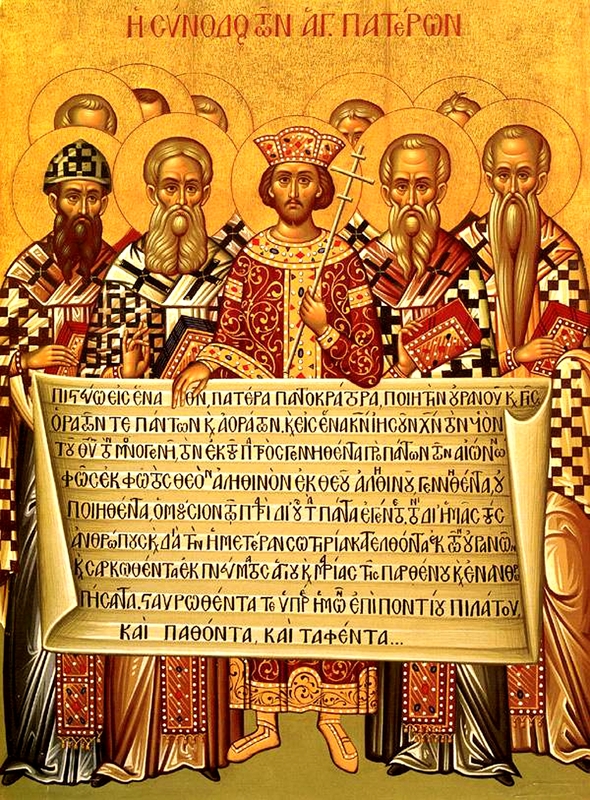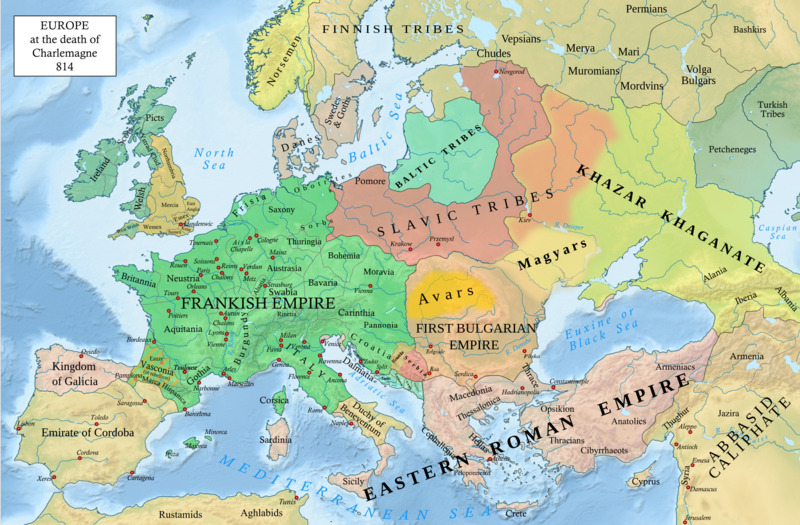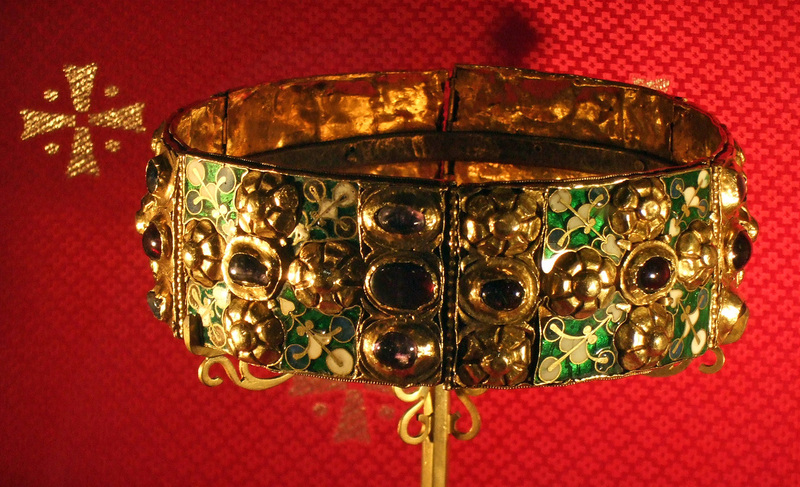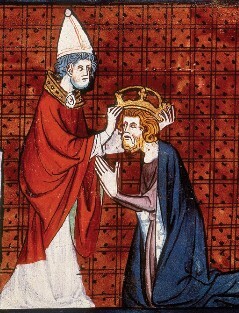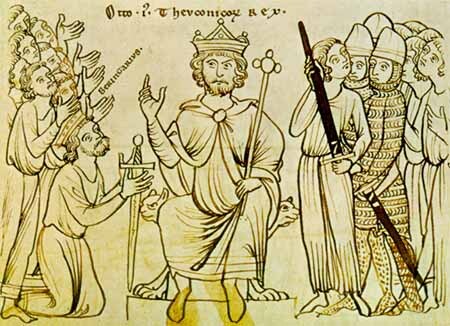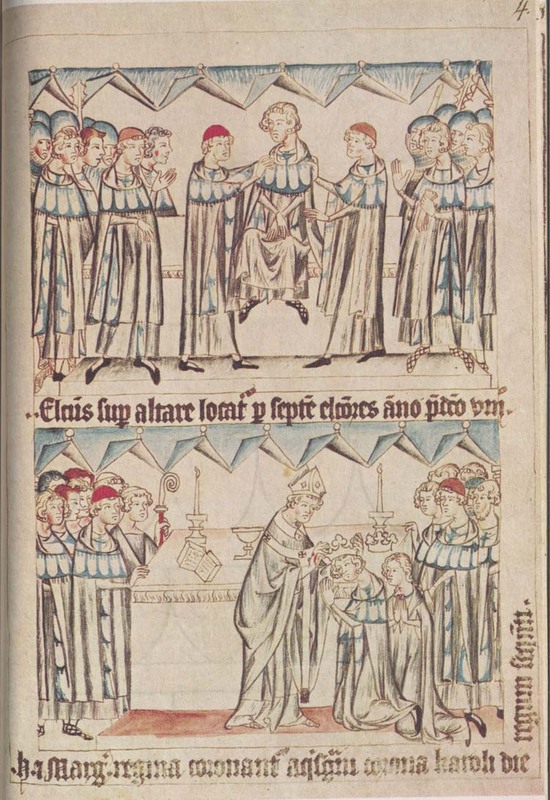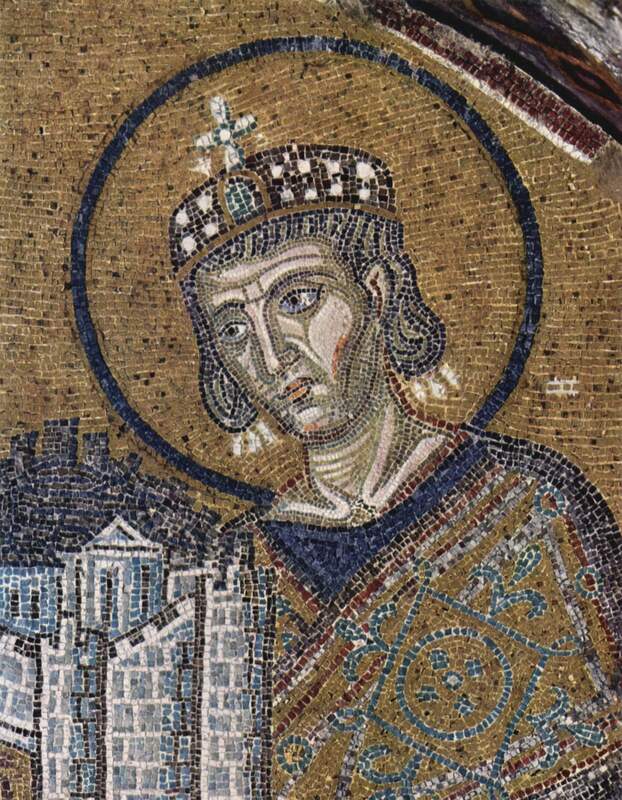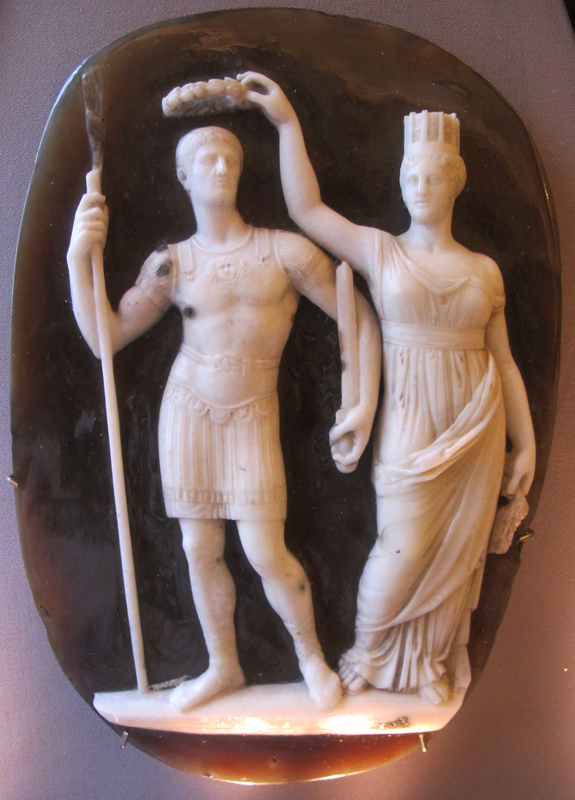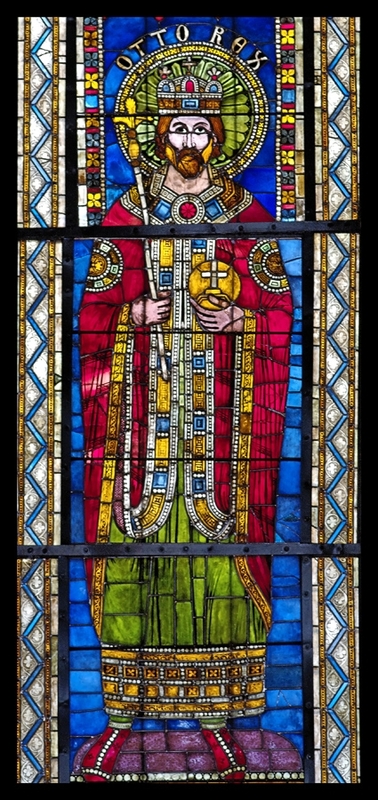Charlemagne and the Franci
The Franks were a Germanic people who were allies of the Byzantines because of their shared Nicene Christian faith (opposed to the Arian Christianity of their neighbours). However, as the Byzantines lost territory, the Franks only expanded. It was under the reign of Charles the Great (more commonly known as Charlemagne), that the Franks conquered much of the territory of the Western side of the Roman Empire. This included the former Germanic Kingdom of the Lombards, located in Northern Italy. With the Franks now Christendom's most powerful force and the Byzantines now under the rule of a woman for the first time (Irene of Athens), the Pope argued on theological grounds that the title was now vacant.
This idea of a transition of Emperorship was called Translatio imperii, which means “transfer of rule.” The legitimacy of Charlemagne’s Empire and the following Holy Roman Empire rested on this idea: that the Pope, as the foremost bishop on Earth, had the spiritual power to invest imperium in an individual. In the Western view, Constantine I transferred power from Rome to Constantinople, and the Pope had transferred it back on the accession of Charlemagne. The Byzantines did not take this lightly, after a limited war between the two in southern Italy, and the overthrow of Irene, they would never recognize Charlemagne as a Roman Emperor, only conceding that he was an Emperor, with his domain not being recognized.
Despite the empire largely disintegrating after his death, the idea of the Roman Empire rightfully residing in the west was again received in the late 10th century by Otto I, who ruled the Eastern portion of Charlemagne's former Empire (Modern Germany) and would retake Northern Italy by Papal request. After being crowned Emperor in 962, it would soon become clear that Otto was far more interested in the Roman portion of his title than Charlemagne ever was. The Holy Roman Emperor was considered the most important position on Earth by the west in the middle ages, and even in the Early Modern period. [The blank item after Otto is just so you can appreciate the map without a massive image of Otto the Great blocking it]
